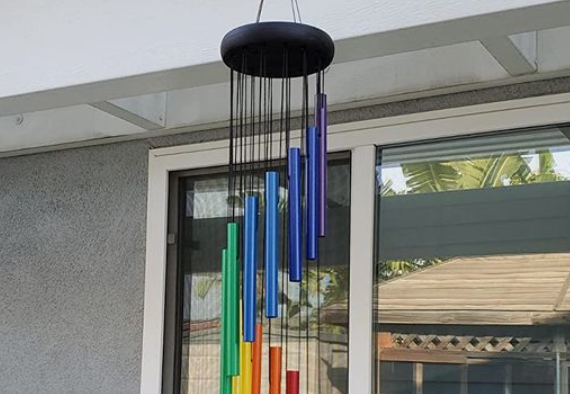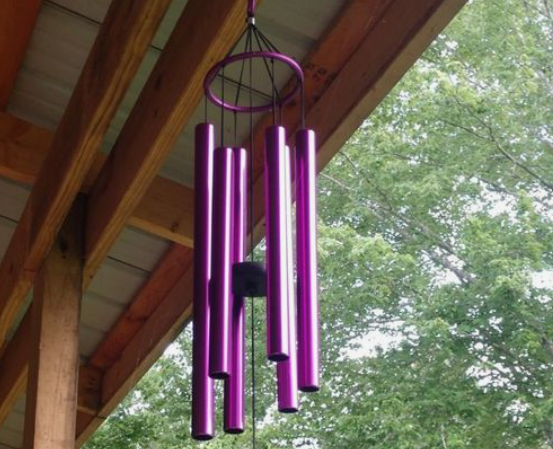Most people appreciate wind charm for two reasons: the soothing melodies and the aesthetic charm.
However, one crucial element in wind chimes that has been overlooked constantly is the string.
The sting thickness is crucial in producing soothing melodies that everyone enjoys. This is a comprehensive guide.
We will also provide detailed instructions on re-stringing a wind chime and explain its impact on overall performance.
Let’s find out the thickness!
The Science Behind the Wind Chime

The melodies that grace our ears are due to the vibrations in the wind chime.
This vibration would not have been present if there was no string thickness.
To achieve this divine music, the thickness of the string is a crucial factor; hence, it’s very important to know why the string thickness matters.
How Does Thickness Influence the Wind Chime

The pitch and resonance are due to the thickness of the wind chime.
So, if a consumer wants different varieties of pitch sound, the person must know how the vibrations of string thickness affect the audio experience.
1. Understanding Pitch Control
Several studies have shown that the pitch of the chime is directly proportional to the string thickness.
So, when the string thickness increases, the consumer will get tones that are deep and calming.
This is perfect for individuals who use wind chimes for meditative purposes.
Similarly, if a thinner chime is used, the sound becomes whimsical, perfect for outdoor purposes.
2. Understanding Volume and Resonance
The greater the thickness, the greater the resistance power.
So, if the consumer wants a wind chime whose audio can be heard through the garden and yard, choosing a thick string is the key.
Conversely, when the consumer wants a wind chime that produces a soft and gentle sound, then the person can opt for thinner chimes, which are used for proximity.
3. Understanding Durability
If you choose a thicker string, there is a high possibility that it will not wear and tear since thicker strings provide more resistance to wind.
Thinner wind chimes can be subjected to damage easily.
It is always advised that if you live in an area with irregular weather conditions, you should opt for a thicker string.
How to Know What is the Right Thickness for Wind Chime

Selecting the wind chimes depends on individual preferences.
This means you have to know the area you live and what purpose you would use the wind chime.
However, certain general considerations will help you get the right pick.
1. Sound Preference
Sound preference is probably one crucial factor that will help you select the wind chime.
If you want a chime for meditation, go for a thicker chime. If you want a sound that would create a playful atmosphere, we recommend a thinner chime.
Thus, plan for the output you want with your chime to get the desired output.
2. Location
When you are about to insert the chime, make sure you have an activity plan.
Would you install the chime in an indoor space or a small patio?
Or would you install it in your backyard or garden? If your answer is the first one, go for a thicker chime.
If not, go for the thinner chime.
3. Climate
If you live in a place that is cold throughout the season, it indicates that it will not face strong winds.
This reveals that a thinner string is acceptable.
Conversely, a thicker would be an ideal choice if you live in harsh weather conditions.
Since harsh weather conditions mean strong winds, only a thick chime would solve the issue.
4. Experiment
Some wind chimes let you adjust your thickness. If you choose one of those, it doesn’t matter if the chime is thin or thick.
You can adjust the thickness as you like and fine-tune melodies conveniently.
Thus, experimenting will make you enjoy the process and make you learn, too.
Why Materials Matter in Wind Chime

People generally forget the importance of the material while they are so concentrated on the thickness.
Some of the common materials that are used in wind chimes are metal, nylon, and bamboo.
Each has its uniqueness and longevity.
- Metal: Metals produce metal chimes, which are loud and vibrant. The string thickness present in these chimes is thick, but the sound quality is affected by the shape of the chime.
- Nylon: The thickness of the Nylon chime is pretty standard, at 1.5mm. That means it can withstand harsh weather conditions like rain, dust, and wind and still not show any sign of wear and tear.
- Fibers: When consumers want to add rustic charm to their outdoor space, they usually use fiber wind chimes. These strings produce only soft, earthly sounds, which help you recover your anxiety.
Final Takeaway
The thickness of the wind chime may seem like a minor detail, but it’s extremely important. It is a vital factor in the sound quality of the wind chime.
Knowing the importance of string thickness will help you make an informed decision if you love a playful atmosphere or want a meditative sound.
So, when you hear a wind chime next time, this guide will make you appreciate the string thickness installed in the wind chime.
So what are you waiting for?
Purchase your favorite chime using this informed knowledge.










Comments